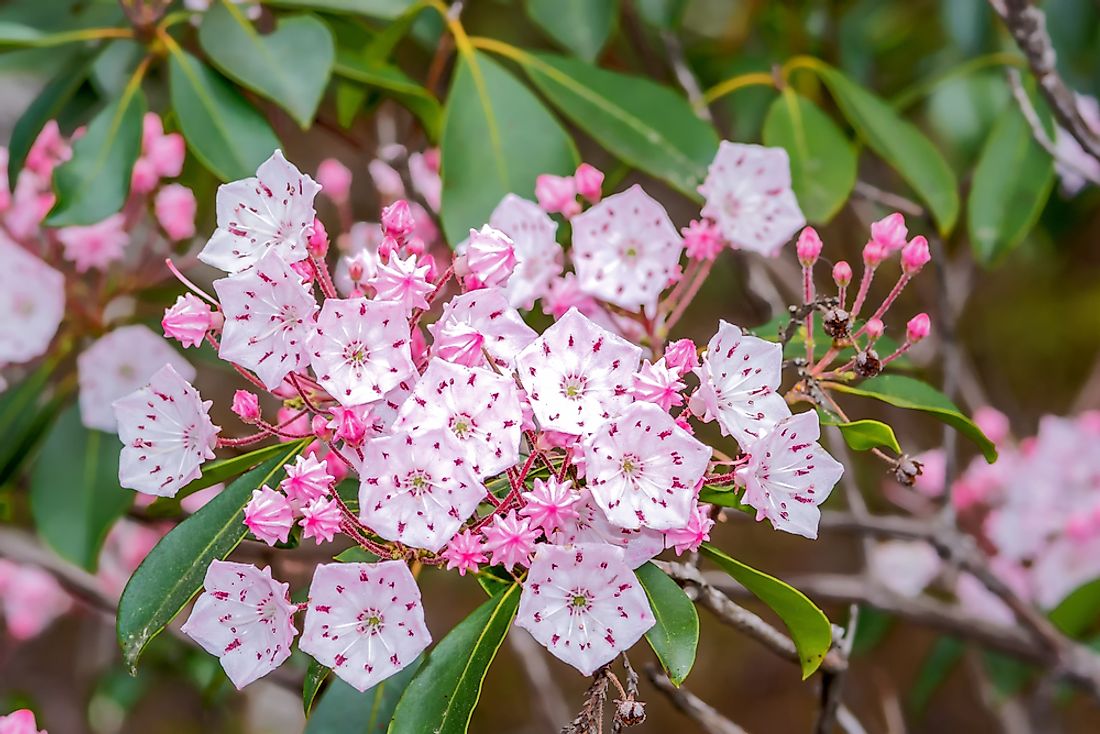What Is The State Flower Of Pennsylvania?

The mountain laurel flower is the designated flower of the US state of Pennsylvania. The flower grows in the countryside of the state and it is one of the important symbols of the state since it represents the beauty and the conservation effort. On the other hand, the Penngift Crownvetch plant is planted at all state roads due to its aesthetic qualities and was given recognition in 1982. Both plants play important roles, while one is recognized as the state flower, the other is recognized as the beautification and conservation plant.
The Road to Recognition
Before it was given official recognition, the then governor of Pennsylvania had received two bills on his desk for his signature to become law. Governor Gifford had to make a choice between the two bills that were passed by the state legislature that proposed either the mountain laurel or the pink azalea flower to be the official state flower. Pennsylvanians in support of any of the two flowers had been engaged in intense lobbying, forcing the governor to settle the debate. On May 5, 1933, he chose the mountain laurel over the pink azalea by signing the bill into law and effectively making it the state flower. The designation, however, did not give it special protection over other wild plants.
Classification
The mountain laurel flower is scientifically classified by the name Kalmia latifolia. From May to June, the distinct pink flowers that bear the star-shaped bloom to reveal them. The plant grows to a height of between three to nine meters while its flower leaves are three to twelve centimeters in length and between one to four centimeters wide. It contains stamens that actively eject pollen whenever a bee disturbs it. The pollen is dispersed through insect pollination. The roots are fibrous to enable the intake of water and nutrients from the acidic soil that it grows in.
Toxic Potential
Despite the plant being among the sources of nectar for bees, it is toxic to animals and human beings. The green parts of the flower pose a danger when ingested. For humans, products made from this flower such as toxic honey will affect them. Some of the symptoms of poisoning will begin to show like irregular breathing, nausea, depression, cardiac arrest and if not handled early, it could result in death. Animals may suffer hemorrhages in their intestines and die. Due to this fact, it is advisable that children are kept away from this flower to prevent poisoning.
Conservation
The lack of special protection laws that preserve endangered species of plants and animals has not stopped the Pennsylvania authorities from preventing its destruction. The Pennsylvania authorities have a raft of laws that are aimed at discouraging the destruction of this plant. For instance, it is illegal for anyone to cut any plant, including this flower, without the owner’s permission even if it was growing on public land. The state regulations have also made it illegal to cut, dig, or damage a living or dead tree, shrub, or plant in any public land within the state.











